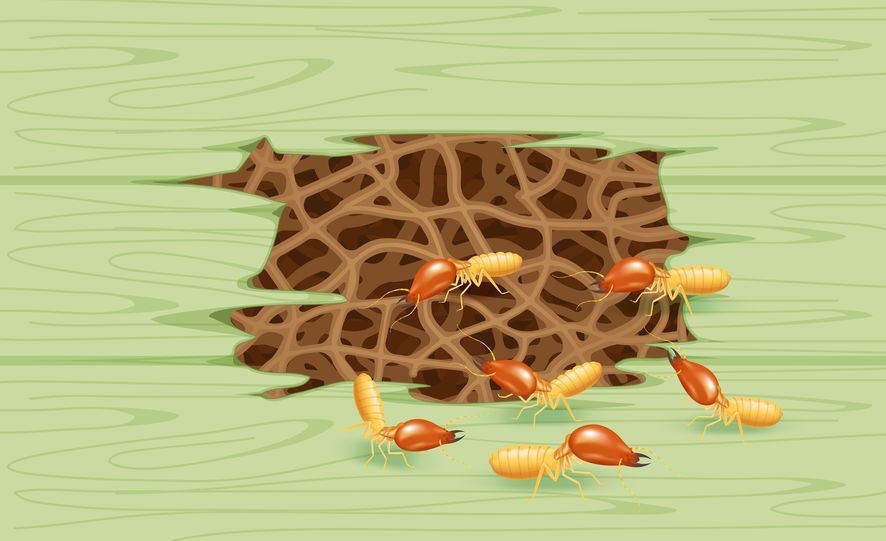When talking about termites, one thing is undeniable – they are industrious insects. They are laser focused on growing their numbers, building up their colonies, and consuming wood. This makes them extremely efficient when it comes to damaging the home. They do have one major drawback as a species – the workers will die when they are out in the open. This is not that big of an issue for drywood or dampwood termites, which build their colonies directly in the wood that they consume, but subterranean termites need to find a workaround for this flaw if they want to eat, since their colonies are built underground. That workaround is the mud tube.
What is a mud tube?
The mud tube is a termite structure that is made out of termite fecal matter and soil. It is meant to protect termites as they travel above ground, usually from the colony to a piece of wood that has an obstacle in the way. These mud tubes are a definitive sign that there is a termite infestation in the home, and they are usually located outdoors on the foundation, or indoors in basements or crawl spaces. Mud tubes are easy to identify, though they are hard to find. They are brown or light brown, depending on the soil in the surrounding area, and they are about one inch in diameter.
The different mud tube types
Termites will build different mud tubes for different purposes. The two most common are the exploration and transportation tubes. The exploration tubes are thin and fragile, and they are temporary. Scouts will build them as they travel above ground to look for wood. A transportation tube is a more permanent structure, and they are used by workers traveling to and from wood.
The other two types of mud tubes are used for protection or easy access. The former is also known as a termite castle, because it is quite large, and is meant to protect the alates (reproductive flying termites) before they set off each year. The easy access tube, also known as a drop tube, resembles a stalactite and is suspended in the air, connecting two areas that do not have any vertical structure between them.
What to do if you spot a mud tube?
If you spot a mud tube in your home, it’s best to leave it alone and call a pest control specialist over. The specialist will be able to check the tube and gather a lot of information about the termites in the home. If you have noticed mud tubes, contact us today and we will set a date for an inspection appointment.

